With the chill of winter in the air some anglers opt to put their kayaks away in the garage or shed until the weather warms again. Others make the most of stable weather patterns and glassy days, the influx of bait into the rivers and estuaries and the cool weather species coming on the chew.
Winter is a favourite time of year for my family of anglers. We are already enjoying the plentiful bait and the snapper, bream, yellowtail pike, tailor and other species this influx of bait attracts. There are also still a few crabs around along with other seafood options including prawns and squid. Winter in my local waters is seafood basket time with the mix of tasty treats on offer.
Don’t get me wrong, I’m all for ‘limit your catch, don’t catch your limit’ and ‘fish for the future.’ I also enjoy a tasty feed of freshly caught seafood and we have some of the best seafood in the world. We don’t abuse the resource, in terms of seasonal species or spawning seasons. We release the larger breeding fish, including larger flathead, and we also respect our catch so that it is kept in optimum condition for the table, by bleeding fish, getting them straight into the ice or cleaning it soon after capture.
Shorter daylight hours, cooler temperatures and chilly winds often make winter kayak fishing less attractive. However, there are a few things you can do to make your experiences safer, more comfortable and more productive.
Early starts can produce some red-hot sessions. With less daylight hours, a quality waterproof LED headlamp will make gearing up, rigging up and handling fish much simpler and safer. Avoid rechargeable lights or at least ensure they have an adequate run-time for your adventure at full power. A spare set of batteries in a dry bag or waterproof box ensures plenty of run-time and peace of mind when using battery headlamps. Railblaza also offer some excellent lighting options for kayak anglers, covering both visibility to others and visibility for the angler.
A simple thing that can make your fishing much more comfortable in winter is the addition of scupper plugs to your kayak. Scupper holes in your sit-on-top kayaks are designed to allow excess water from waves to escape from the cockpit of the kayak. Some kayaks however, especially for larger paddlers, allow water to enter the cockpit through these scupper holes when paddling and fishing, making the cockpit area wetter and colder.
On those calm winter days scupper plugs can be inserted to stop water from entering the cockpit area, leaving it dryer and in turn warmer.
Sit inside kayaks offer excellent protection from the elements in winter. It’s important to do more investigating to see if a sit inside suits your applications.
Appropriate clothing can also make your winter fishing more enjoyable, comfortable and safer. This can include neoprene booties and even SealSkinz waterproof socks, gloves or beanies. Dry pants that include neoprene waist and ankle cuffs can keep the bottom half dry and they are available in lightweight materials for warmer parts of the country. Head scarves are not just for sun protection and can offer excellent warmth and wind resistance in cooler months.
When it comes to the top half, consider layering as a means of better regulating your body temperature. Rather than wearing one heavy layer that may see you snug for the early morning start and then overheating when the sun gets higher in the sky, consider three or four layers that can be removed or swapped as required and stored in a dry bag when not required. Again, a dry top is a good option as an outer layer, with lightweight options available for warmer climates. Another aspect to consider is visibility, with some excellent high-vis clothing options available.
We have been making the most of the end of the sand crab (blue swimmer crab) season, with plenty of sand crab sangas, seafood pizzas and seafood mornay. Don’t forget the crabs, crays, craws and other crustaceans that are available from the kayak in your region.
Whether it’s sneaking up a mangrove drain in search of mud crabs, chasing sandies on the channel edges or going in search of freshwater yabbies or shrimp, it’s all achievable from the kayak, and dropping a few traps on the paddle to your favourite fishing spots may be your ticket to a seafood basket of your own.
Recently we discovered smaller, 50cm diameter versions of the crab pots that we use for chasing sand crabs and these are perfect for the kayak angler. We have had them out on some reasonably large tides without them drifting. Although we christened them with a female crab (that couldn’t be kept), we soon recovered with a crab sandwich model. We’re definitely looking forward to picking up a few more of these and it will make kayak crabbing simpler and more manageable. Check out what tasty crustaceans are available in your region and how to catch them. Remember to check the local regulations.
There have been plenty of flathead hitting the decks for us, as always, while throwing soft plastics. Winter has also seen a few snapper, quality bream and a few tailor, swallowtail dart, flounder and plenty of yellowtail pike turning up.
Make the most of the advantages the kayak offers you and get up on those flats, work those mangrove edges and push up into those drains where the influx of bait is trying to feed and find protection from predators. The shallow draft, low profile and low shadow of the kayak allows you to sneak into some shallow, warmer water that often produces the goods in the cooler months.
Some winter species are often considered less desirable than others on the table, however they are readily available in large numbers and it’s worth investigating other preparation techniques such as fish smoking to get the most out of these winter species. This includes salmon, tailor, swallowtail dart and even yellowtail pike.
One tip for anglers fishing soft plastics during the cooler months is to ensure you have a variety of colours. The winter winds can stir up the water occasionally, or make it super clear when the westerly blows. The colour of your plastic can directly impact on your results.
This was reinforced again recently when some of our favourite natural, lighter colours couldn’t switch on a bite. A quick change to black and gold and a better silhouette colour in the dirtier water produced plenty of fish. The theory that generally works for us is this: in clearer water on brighter days fish a natural, lighter colour and in dirtier water fish a darker colour with glitter in the plastic. This should also catch the available light and trigger a bite. If neither of these are working, throw something with fluoro colours in it, such as pink or chartreuse.
After catching a flathead that coughed up a large squid and then investigating our local boat ramp pontoon for stains of ink left by successful squid fishos, we decided to try our luck at catching a few. We set ourselves up with a few smaller squid jigs that were recommended for our region in size 2, 2.5 and 3 sizes and a variety of colours. We also had some small chemical lights and a few A-Just-A Bubble Floats in case we wanted to suspend the jigs under a float.
These floats are an excellent option for squid fishing or fishing with baits, as they feature internal surgical rubber that twists and locks onto the line when you twist the top cap. No knots or stoppers are required. There’s no line damage. It’s quick and easy to adjust your dropper depths and you can lift the top cap to add water to cock the float, increase casting distance or add a chemical light for night fishing.
It’s early days in our squid fishing, however we are starting to nut them out and the squid fishing will get better as we move further into winter. The kayak is a great craft for targeting squid. The edges of the shadows surrounding boat ramps, bridges and other areas with artificial lights are a prime area to target, along with the weed beds where they hunt and feed. All of this is within easy access of paddle craft and you can beat the crowds that sometimes occur when land-based fishing. Stay tuned and we can bring you some more tips for kayak squidding in a future issue.
After using a C-Tug Kayak Trolley for many years we finally added the solid wheel version to our kit. The original pneumatic tyre version was the best kayak trolley I had owned until purchasing this newer version. We now don’t have to worry about ensuring our tyres are inflated or worry about getting a flat.
The solid wheels have a rubber grip on them that we have taken on and off road without issue, and the trolley still has the same great design that includes tool free assembly, quality materials that won’t corrode in the salt and a design that allows it to be dismantled and stored in a reasonable sized kayak hatch. If you are looking for a kayak trolley, make sure you check out the C-Tug option.
Even though the days are shorter and the weather is cooler, it doesn’t mean that you have to put the kayak in storage for a few months. In fact, winter can produce some of the best fishing, along with a range of other tasty morsels to catch, that can see you put together your own seafood basket. Get your kayak fitted out, lighting and clothing in order and you can get out there and make the most of our Aussie winter wonderland. See you on the water.
Reads: 3208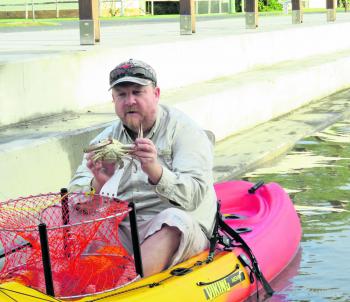
The first crab from the smaller crab pots. Unfortunately, it was a female that had to go back.
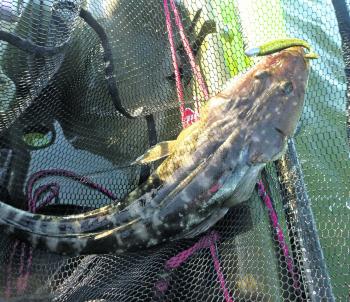
The gold rush colour proved effective in the dirtier water.
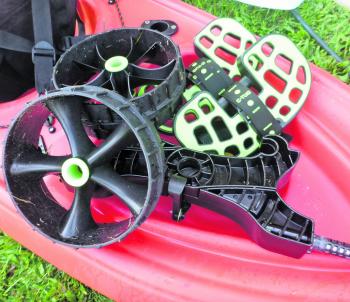
The C-Tug Kayak Trolley disassembles for storage in a kayak hatch.
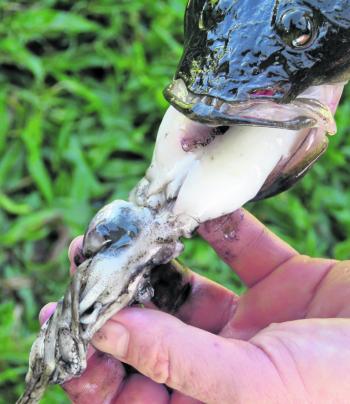
This flathead coughed up a large squid and inspired another adventure.
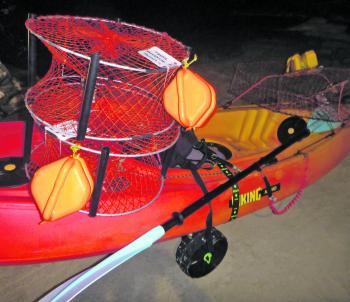
Crab pots held on with occy straps and ready to be dropped for the night high tide.
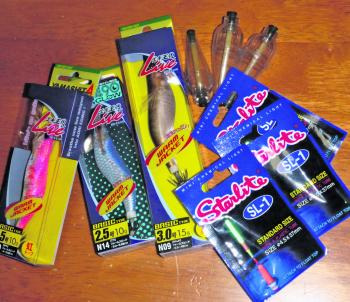
Gearing up for squid.
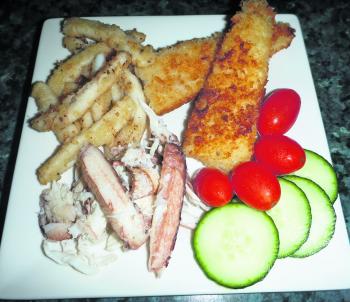
A seafood basket of fresh sand crab, panko crumbed flathead and salt and pepper squid.
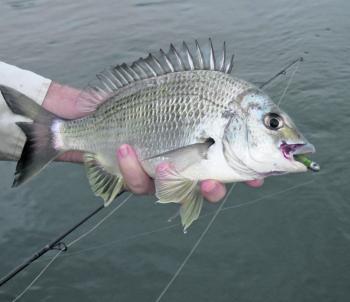
A handful of winter bream.
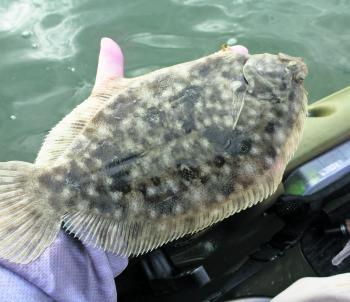
Flounder become more aggressive when the weather cools.
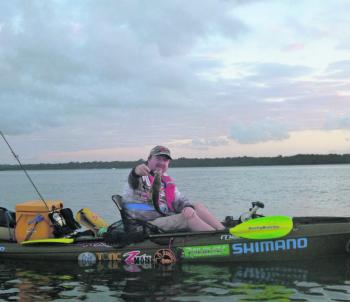
The author with a flathead from a cool early start.
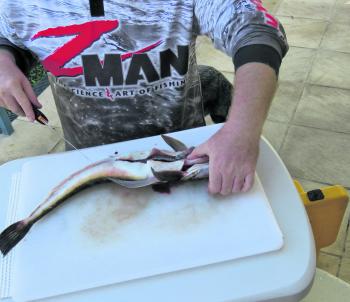
Flathead filleting. We release plenty, but it’s hard to beat a feed of fresh seafood.
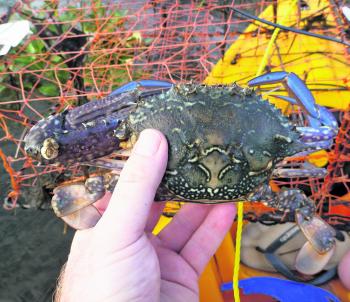
Only one claw, but this legal blue swimmer crab is still a keeper.
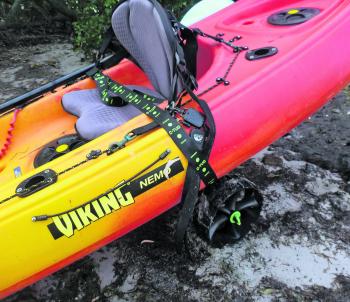
The C-Tug Kayak Trolley makes transporting the kayak to and from the water a breeze.
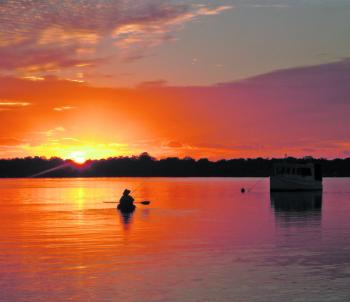
Winter can produce some glassy days that are perfect for kayak anglers.
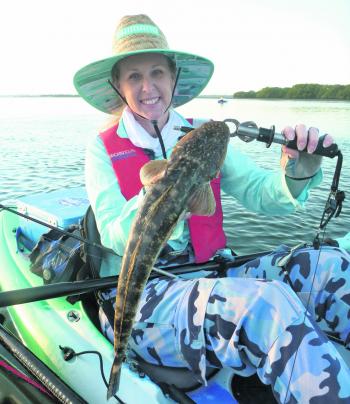
Sheri with a quality winter flathead on a soft plastic.




